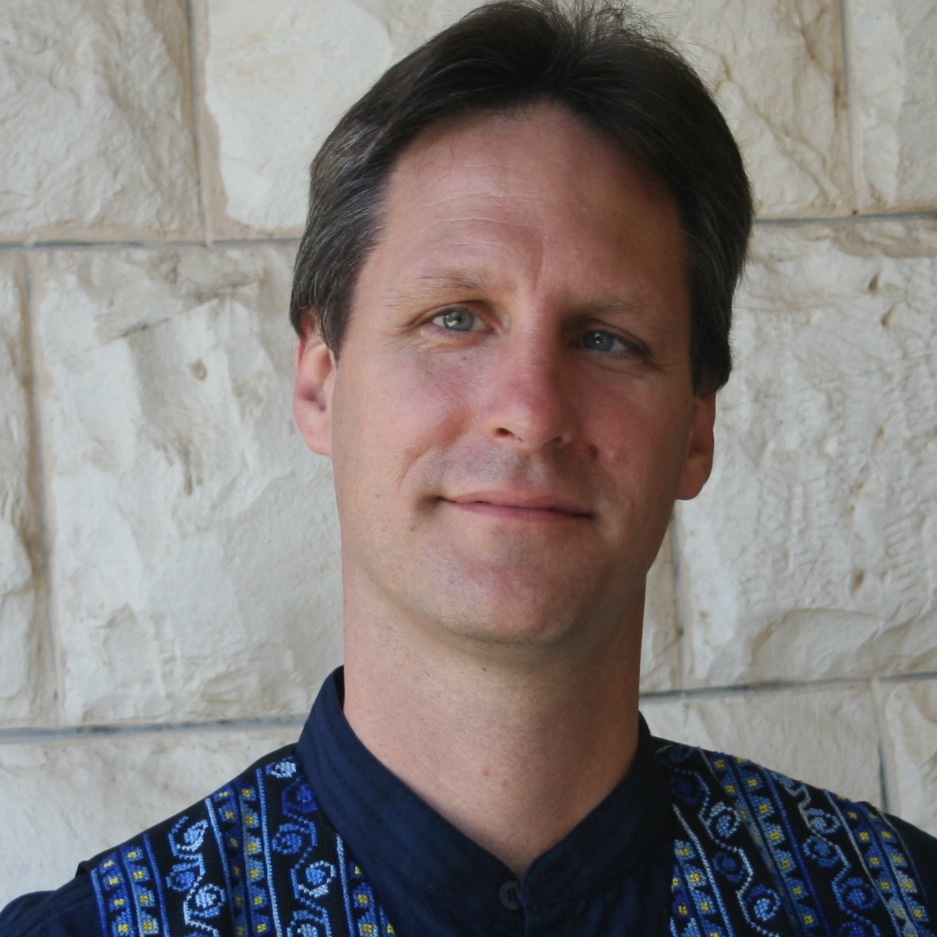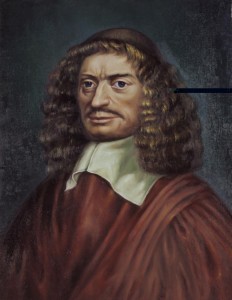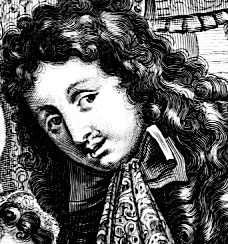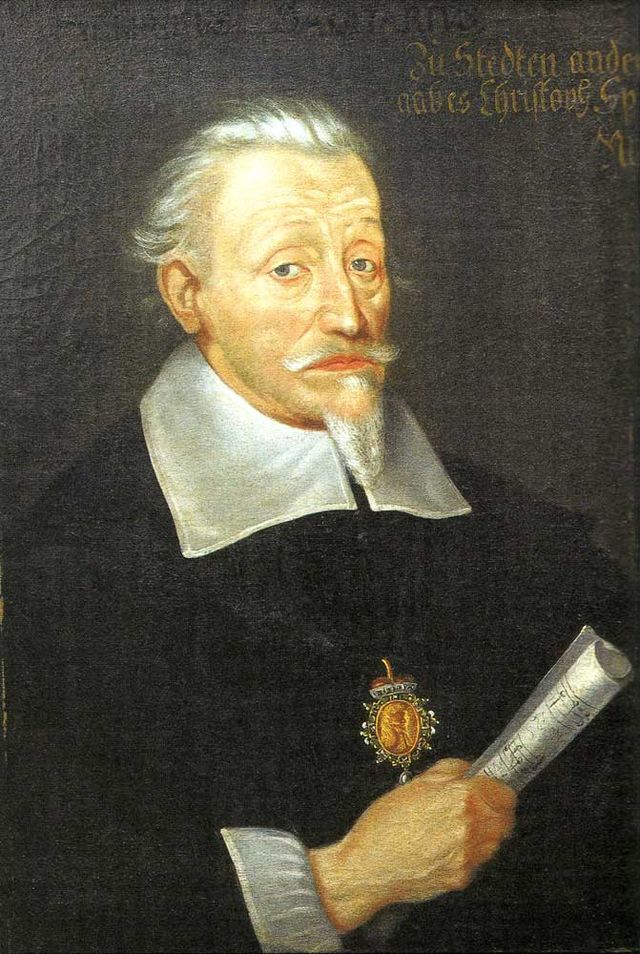Artistic Director Paul Flight and the California Bach Society present “Oratorios and Dialogues: A Genre Emerges” on February 26–28 in San Francisco, Palo Alto, and Berkeley. The program of sacred 17th-century music drama features Giacomo Carissimi’s Jonah and the Whale, Le Reniement de Saint Pierre by Carissimi’s pupil Marc-Antoine Charpentier, and Heinrich Schütz’s Weib, was weinest du? The 30-voice chorus will be joined by strings, theorbo, and organ, and vocal soloists Lindsey McLennan Burdick, soprano; Dan Cromeenes, countertenor; Kyle Stegall, tenor; and Sepp Hammer, baritone.
 The origins of the oratorio can be found in sacred dialogues in Italy. These were settings of Biblical Latin texts, and musically quite similar to motets. There was a strong narrative, dramatic emphasis with conversational exchanges between characters in the work. The Oratory of St. Philip Neri in Rome gives us the origin of the term (Italian for “oratory” is oratorio). Music at this church featured the singing of spiritual laude. These became more and more popular and were eventually performed in specially built oratories (prayer halls) by professional musicians. Again, these were chiefly based on dramatic and narrative elements. Sacred opera provided another impetus for dialogues, and they greatly expanded in length (although never really beyond sixty minutes long). Cavalieri’s Rappresentatione di Anima et di Corpo is an example of one of these works, but technically it is not an oratorio because it features acting and dancing. The first oratorio to be called by that name is Pietro della Valle’s Oratorio della Purificazione, but due to its brevity (only twelve minutes long) and the fact that it was also known as Dialogo della Purificazione, there is some justification in the tendency to call longer works “oratorios” and shorter works (in the same style) “dialogues.”
The origins of the oratorio can be found in sacred dialogues in Italy. These were settings of Biblical Latin texts, and musically quite similar to motets. There was a strong narrative, dramatic emphasis with conversational exchanges between characters in the work. The Oratory of St. Philip Neri in Rome gives us the origin of the term (Italian for “oratory” is oratorio). Music at this church featured the singing of spiritual laude. These became more and more popular and were eventually performed in specially built oratories (prayer halls) by professional musicians. Again, these were chiefly based on dramatic and narrative elements. Sacred opera provided another impetus for dialogues, and they greatly expanded in length (although never really beyond sixty minutes long). Cavalieri’s Rappresentatione di Anima et di Corpo is an example of one of these works, but technically it is not an oratorio because it features acting and dancing. The first oratorio to be called by that name is Pietro della Valle’s Oratorio della Purificazione, but due to its brevity (only twelve minutes long) and the fact that it was also known as Dialogo della Purificazione, there is some justification in the tendency to call longer works “oratorios” and shorter works (in the same style) “dialogues.”
By the mid-17th century, two types of oratorios had developed, the oratorio volgare (in the vulgate, i.e., not in Latin) and the oratorio latino (in Latin). The most significant composer of oratorio latino was Giacomo Carissimi (1605–1674), whose Jephte is regarded as the first masterpiece of the genre. Giacomo Carissimi began his professional career as cantor, organist, and then maestro di cappella in institutions near Rome, such as the Cathedral of Tivoli and the Cathedral of San Ruffino in Assisi. Towards the end of 1629 his career took an important leap as he assumed the position in the heart of Rome of maestro di cappella at the Jesuit Collegio Germanico Ungarico with responsibility for the music of the church of Sant’Apollinare. He held this position until his death in 1674. From this highly prestigious position Carissimi won early fame throughout Europe, becoming one of the leading figures in the music of the seventeenth century.
Many musicians of the time studied his music and came to study with him directly, including the Frenchman Marc-Antoine Charpentier, and learnt this new style of composition. It is owing to Carissimi that much of this traditional Italian style of composition was maintained throughout continental Europe for the entire seventeenth century.
Carissimi also collaborated with the Roman oratories, particularly with San Marcello, the Oratorio del Santissimo Crocifisso, for which it is quite probable that many of his oratorios were composed.
A traveller passing through Rome some time in the 1650s is recorded as describing the music performed at Santissimo Crocifisso as “a music so sweet and harmonious which, once having left Rome, can never be hoped to be heard again on the face of the Earth. It was composed with at least twenty voices, organs, lute, viola and two violins, all of which were playing music so melodious and delicious that Cicero with all his eloquence would never have been able to describe it” (H.E. Smither: The Oratorio in the Baroque Era).
Annunciate gentes and Timete Dominum are two works by Carissimi written in the oratorio latino style. Due to their brevity, they are more accurately described as dialogues, although the text does not feature individual characters. Instead, the alternation between florid solos, duets, and full chorus creates the dramatic effect.

Jonas is probably more or less contemporary with Carissimi’s somewhat more famous Jephte. The traditional Biblical text is largely followed in the narrative, without paraphrase, but with a number of dramatic interpolations. The first section follows the Biblical adventures of Jonah (Jonah 1: 1-4) and the first interpolation is heard in the chorus “Et proeliabantur venti” (and the winds battled), which uses the technique of two separate choirs and effectively reflects the storm that threatens the ship where Jonah is sleeping. The second section describes the interaction between Jonah and the sailors. Similar to the original Biblical text, this is also expressed in dialogue. The sailors’ interventions are varied: first a duet, then a chorus, and then alternation of solo voices from the choir. The third episode is made up entirely of Jonah’s prayer to God from the belly of the whale (Jonah 2). The refrain “Placare, Domine, ignosce, Domine, et miserere” (Forgive, Lord, and have mercy), strengthened with the presence of instrumental ritornelli, divides the long recitativo into three different, but equal sections. The conclusion condenses in just a few lines the whole of the third Biblical chapter in a final chorus, portraying the Ninevites’ recognition of their sinfulness and plea for redemption. The text of the final chorus is a free invention of the librettist.
Marc-Antoine Charpentier (1643–1704) was born in or near Paris, the son of a master scribe who had connections to influential families. Charpentier received a very good education, perhaps with the Jesuits, and entered law school in Paris when he was eighteen. He withdrew after a brief period. He spent several years in Rome, probably between 1667 and 1669, and studied with Giacomo Carissimi.
For the next seventeen years, under the patronage of Mlle de Guise, Charpentier composed a considerable number of vocal works, including a succession of Italianate oratorios set to non-liturgical Latin texts. (Charpentier preferred the Latin term canticum to the Italian oratorio). His patron had a great love for Italian music, and due to her frequent entertaining of Italians passing through Paris, there was little reason for Charpentier to conceal the Italianisms he had learned in Rome.
After Mlle de Guise’s death, Charpentier virtually ceased writing oratorios and instead primarily wrote musical settings of psalms and other liturgical texts for the Jesuits. Charpentier was appointed maître de musique for the Sainte-Chapelle in Paris in 1698, a royal post he held until his death in 1704. Unfortunately, virtually none of Charpentier’s compositions from 1690 to 1704 have survived because when the maître de musique died, the royal administration routinely confiscated everything he had written for the Chapel. Charpentier died at Sainte-Chapelle, Paris, and was buried in a little walled-in cemetery just behind the choir of the chapel (the cemetery no longer exists).

Salve Regina (Hail, Queen) is not technically a dialogue or an oratorio. But the setting, which utilizes triple choirs (two full choirs and a trio), certainly recalls their stylistic elements; Charpentier skillfully manipulates the musical texture by combining and separating the three choirs, and using the small choir in the most dramatic gestures of the piece, especially in the astounding “Ad te clamamus” section, with its powerful dissonances that describe a painful descent into a “valley of tears.”
Le reniement de St Pierre (The Denial of Peter) is a dramatic account of Peter’s denial of Christ, its text skillfully incorporating material from accounts of the Passion in all four Gospels. It is strongly influenced by the style of Carissimi’s oratorios. Charpentier’s forces are relatively modest, involving only voices and continuo. Nevertheless, he takes every opportunity to intensify the text. For instance, just before the cock crows, for instance, there is a quartet in which Peter vehemently denies knowing Jesus. Charpentier’s agitated music perfectly captures both Peter’s adamance and the persistent questions and accusations of the other three characters. Perhaps the most memorable passage in the work, though, is the final section. Over thirty bars long, this is built entirely on a setting of the words ‘flevit amare’ (wept bitterly). Here the vocal lines weave a dense web of counterpoint, full of suspensions and other expressive dissonances. This powerful evocation of Peter’s remorse is reminiscent of the final chorus of lament in Carissimi’s Jephte; Charpentier clearly knew this work very well, since he himself made a copy of his teacher’s masterpiece.
Heinrich Schütz (1585–1672) is generally regarded as the most important German composer before J.S. Bach and one of the most important composers of the 17th century. He wrote what is traditionally considered to be the first German opera, Dafne, which was performed in 1627. Sadly, the music has been lost. Given Schütz’s mastery of dramatic expression, it is disappointing that no other operas have come to light.

In 1628 he went to Venice, where he met and studied with Claudio Monteverdi; he was highly influenced by the Italian composer’s musical gestures.
His writing often includes intense dissonances caused by the contrapuntal motion of voices moving in correct individual linear motion, but resulting in startling harmonic tension. Above all, his music displays extreme sensitivity to the accents and meaning of the text, which is often conveyed using special technical figures drawn from musica poetica (a system of musical gestures associated with verbal rhetoric). However, the composer’s style became simpler in his later works, which make less frequent use of the kind of distantly related chords and bold modulations in his earlier works.
Weib, was weinest du? (Dialogo per la Pascua) (Woman, why are you crying? Easter dialogue), was composed not later than 1625. It is scored for four voices and continuo. The text is a dialogue based on the episode, narrated in the Gospel of John, of Jesus appearing to Mary Magdalene, one of his female disciples. In performance, it is often followed by Luther’s Easter hymn Christ ist erstanden von dem Tod (Christ is Risen from Death). The material for this dialogue was taken from the composer’s 1623 Die Auferstehungshistorie, which includes the same Gospel text. A review of a recording notes: “A setting of Mary Magdalene’s recognition of the risen Jesus, it is notable in its expressive intensity and in its retention of motives and harmonic gestures from the earlier “Resurrection History.”
The concert concludes with Beschluß (final chorus) from Die Auferstehungshistorie (the full title is Historia der fröhlichen und siegreichen Auferstehung unseres einigen Erlösers und Seligmachers Jesu Christi—The history of the joyful and victorious resurrection of our Savior, our only Savior, Jesus Christ), which was written around 1623 and published in Dresden in the same year. This particular movement is set for double choir (with basso continuo, and optional instruments), featuring a tenor soloist, who joyously and repeatedly proclaims “Victoria!” (victory) over the German text (praising God), until the choir finally surrenders and joins in proclaiming the victory.
SFEMS members receive a $5 discount on the advance purchase price when using promotion code “SFEMS” until 5:00 p.m. on Thursday, February 25. Order by phone at 650-485-1097 or online at www.calbach.org/tickets.pl.
Performances are 8:00 p.m., Friday, February 26, at St. Mark’s Lutheran Church in San Francisco; 8:00 p.m., Saturday, February 27, at All Saints’ Episcopal Church in Palo Alto; and at 4:00 p.m., Sunday, February 28, at St. Mark’s Episcopal Church in Berkeley. General tickets are $28 in advance, or $33 at the door; senior tickets are $20 in advance or $24 at the door. Students and patrons under 30 always pay $10.












